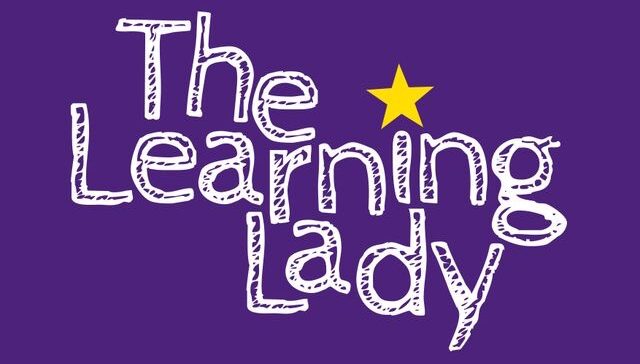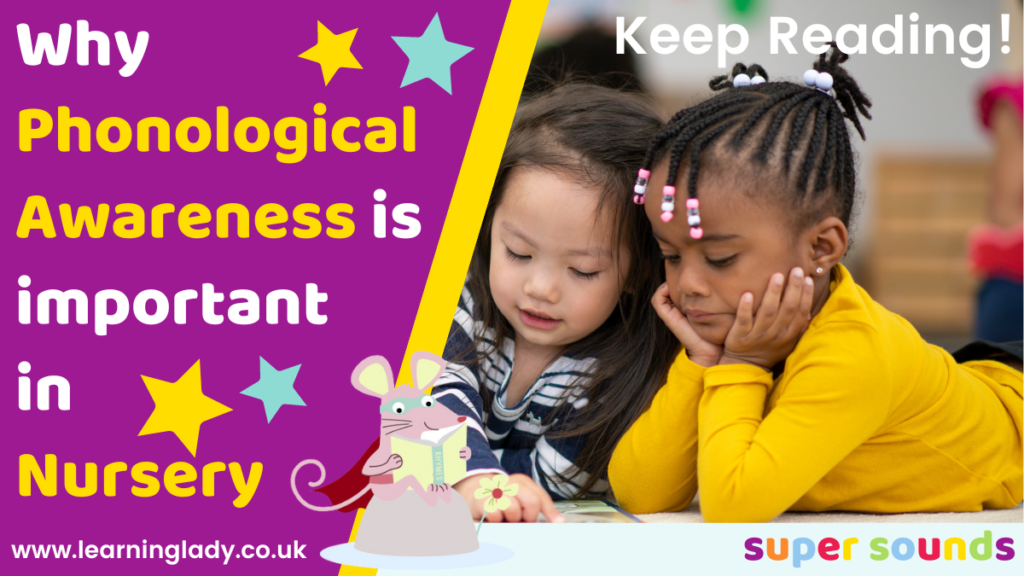We all want our preschoolers to be ready for reading, and phonological awareness is the magic ingredient!
This developmental step sounds overwhelming. But, like most things, it’s easy to understand when we break it down into smaller steps.
When I started working with the staff and children at The Oaks, everyone felt under pressure to get the children ready for school.
In the beginning, staff and parents didn’t know what phonological awareness was; how to develop it, or how it would lead to perfectly prepared preschoolers.
But, they were already developing this set of prephonics skills, without even realising it!
This is the story of our journey together.

What is phonological awareness?
Phonological awareness is a vital foundation for reading. It helps 3 and 4 year olds understand that words are made of separate spoken sounds that can be manipulated to create words.
This is a critical developmental step before phonics, which is a system that draws on the connection between spoken sounds and letters.
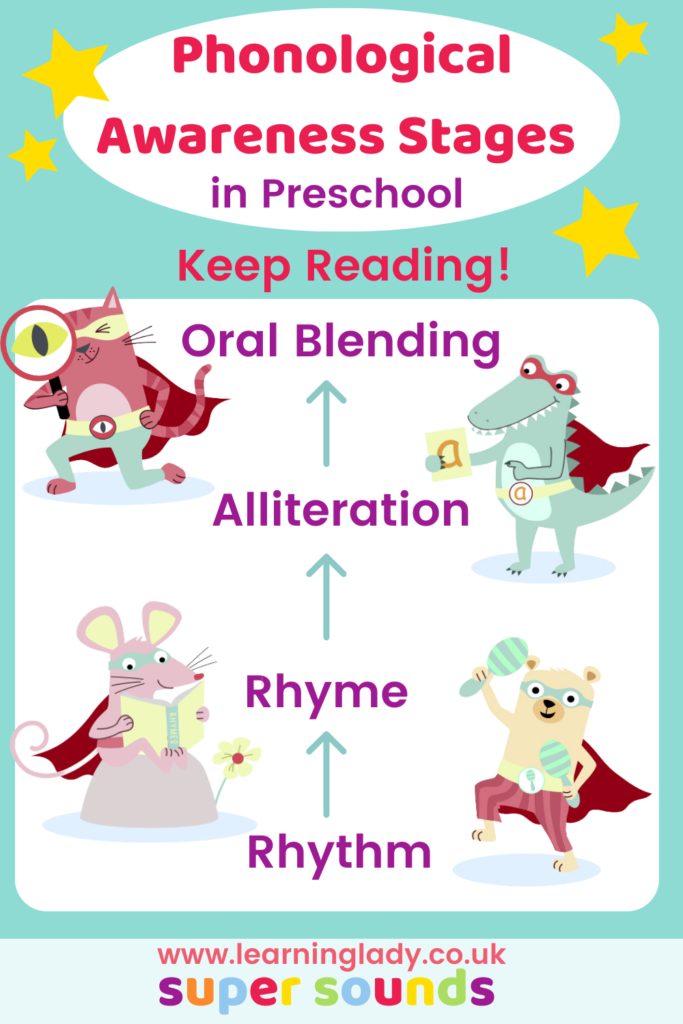
Phonological awareness is built step-by-step through language play.
Preschool phonics activities that support this vital prereading development include reading carefully selected stories and rhymes, singing songs, and playing preschool games.
Phonological Awareness Stages
Phonological awareness stages include:
- Building awareness of syllables through rhythmic play
- Recognising when spoken words rhyme
- Identifying similarities in spoken sounds at the beginning of words
- Breaking words up into separate spoken sounds orally
Misunderstanding phonological awareness Development
Phonological awareness development is a spoken language skill that doesn’t involve written letters.
Our preschoolers must understand the complexities of how spoken language works, before introducing the complication of a written code.
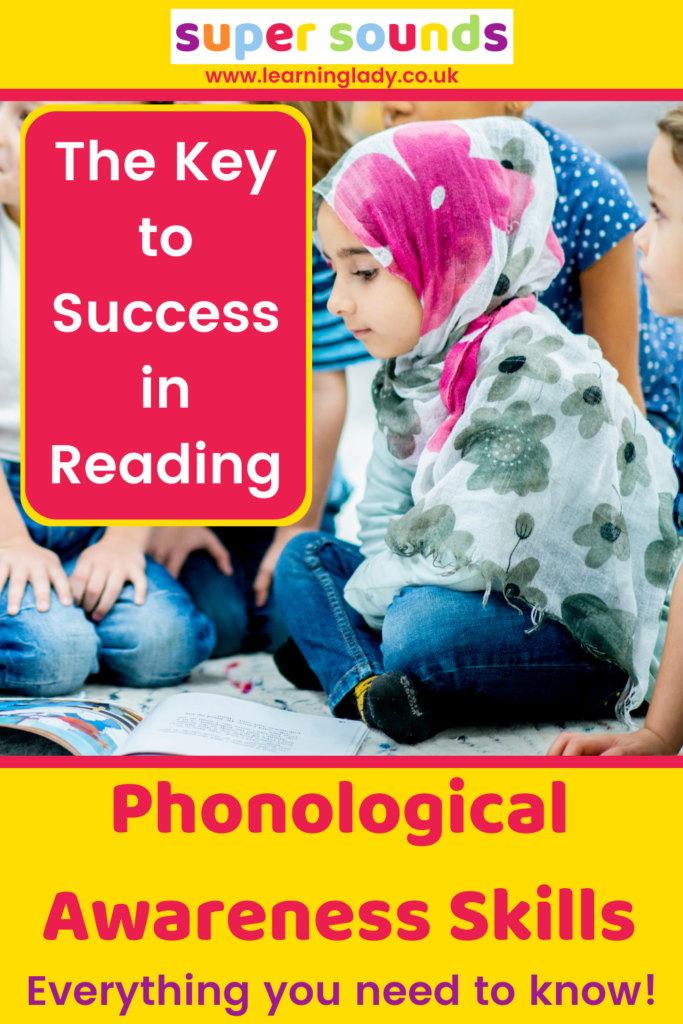
Introducing letters matched to sounds is visual, and phonological awareness is not. This is why the staff and parents at The Oaks felt the temptation to be ‘getting ahead’ with Phonics. They could visually relate this to reading. We started to think about phonological awareness development in detail, and how this unseen skill would help their preschoolers even more than letter-sound recognition. |

Lots to remember!
We discussed how phonological awareness happens alongside language development.
At 3 and 4 years old, the number of words children learn each day is rapid! Learning letters on top is just too much.
Building Banks of Words
Essential language play which supports this crutial area of learning, also actively increases vocabulary and comprehension skills too.
Without these skills, children may struggle, encountering difficulties in reading, spelling, and comprehending when they start school.
Therefore, teaching phonics without this firm foundation is counterproductive.
Sharing phonological awareness examples at The Oaks
At The Oaks, the staff began with some essential Ready For Reading training.
They needed a super speedy way of gaining some instant phonological awareness examples for an improved understanding- fast!
Building awareness of syllables through rhythmic play
The phonological awareness journey begins by breaking words into sound ‘chunks’. As adults, we recognise these ‘chunks’ as syllables.
Syllables are introduced to preschoolers by playing with rhythmic stories, rhymes, and games.
A rhythmic game to play at home or nursery
Recognising when spoken words rhyme
Once 3 year olds can break words into chunks of sound, they are ready for rhyming.
Rhyming involves listening to the similarities and differences in chunks of sound at different points in a word.
Preschoolers begin to notice that words rhyme when the endings of words sound the same, and the beginning of words sounds different.
A rhyming game to play at home or nursery
Identifying similarities in spoken sounds at the beginning of words
The next step towards being ready for reading builds on rhyming.
Known as ‘alliteration’, this step helps children to hear when words next to each other begin with the same spoken sound.
This helps preschoolers to tune into the similarities in individual spoken sounds.
Breaking words up into separate spoken sounds
Once preschoolers can identify the similarities in sounds at the beginning of words, they are ready to break words up into all the separate sounds they hear.
Getting this right takes lots of practice and is much harder than matching letters to sounds. This final element of phonological awareness is critical to successful reading in school.
“How do we know if our preschoolers are ready to develop phonological awareness?”
Preschoolers usually begin to develop phonological awareness at around 3 years old, as spoken language and understanding develop beyond words as labels for objects, actions, or people.
The Oaks staff were delighted that so many of the preschool children were already showing signs of progress in this area. They had been developing these prephonics skills all along!
Then there was another lightbulb moment.
Because the provision for phonological awareness had been general, rather than planned step-by-step, the staff didn’t know which skills to prioritise next.
Easy Peasy Phonological Awareness Assessment
I introduced this super successful prephonics assessment that had an instant impact!
Designed to be easy peasy and quick to use, it helped point staff in the right direction, straightaway.
Each keyworker could pinpoint the essential phonological awareness skills their children had mastered.
Then, they used the tried and tested assessment tool to identify their next steps
This made planning new and exciting activities much more manageable, saving hours of time.
Introducing phonological awareness skills to the families
The staff at The Oaks were pleased to have a super simple road map, guaranteed to keep their 3 and 4 year olds on track. They shared this with families and even added it to their website for everyone to see. The parents were thrilled to be more informed.
4 fun phonological awareness activities to try!
Once everyone at The Oaks knew where to start, they were keen to try some fun-filled phonological awareness activities in the setting and at home.
These hugely popular prephonics activities from the Super Sounds book were the perfect starting point.
Phonological Awareness Activities | Rhythm
Clapping games might feel a bit ‘old school’ but are a powerful way to develop an early awareness of syllables anywhere.
With a modern twist, you can try this super simple game today, mixing it up easily, based on the interests of your 3 year olds.
Phonological Awareness Activities | Rhyme
This is a version of a rhyming pairs game that uses everyday objects or toys. The children at The Oaks loved playing it with one of the key workers and became so confident that they eventually played it on their own.
You Will Need:
2 gift bags, shopping bags, or pillowcases (bag A and bag B)
5 rhyming pairs of objects.
Put one object from each pair in bag A, and one in bag B.
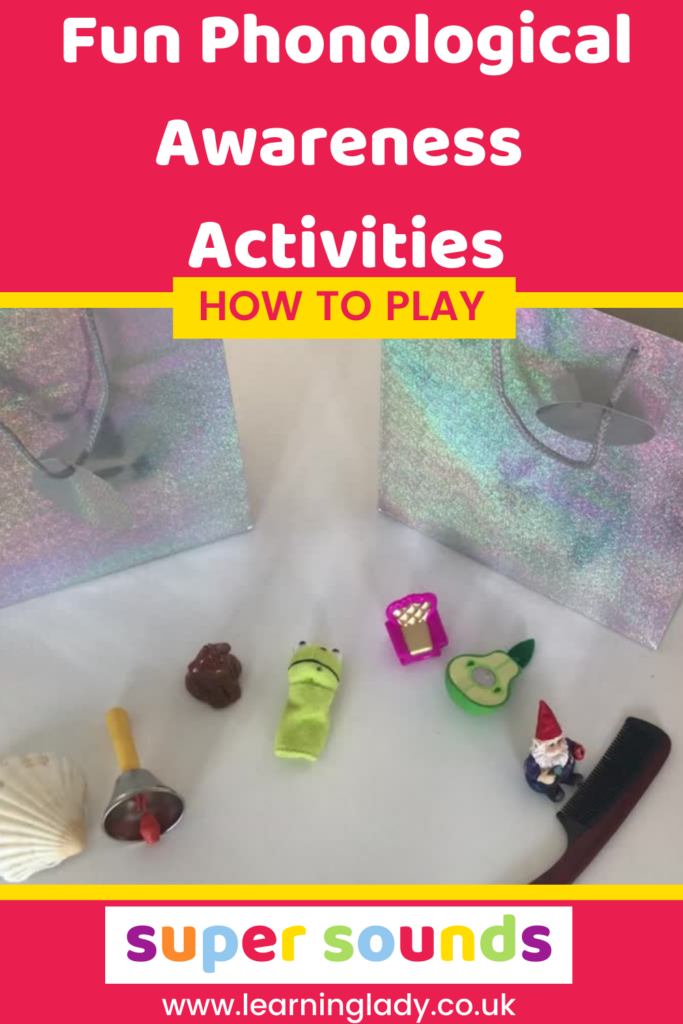
Explain that the children are going to sort out the objects in the bags by finding the objects which rhyme.
Show the children each of the objects to check that they can name them.
Put the objects from each rhyming pair back into bags A and B, emphasising the rhyme as you do so.
Remind the children that two words rhyme when the ending sounds the same.
For example, d-og and fr-og. Explain that these rhyme because they have the same -og ending.
Begin the game by encouraging the children to take turns taking 1 object from bag A, and 1 object from bag B. Encourage all the children to try to work out if this is a rhyming pair by emphasising the ending of the words.
If the pair rhymes, these can be removed from the bags and set aside in the middle of the group.
If the pair doesn’t rhyme, the objects need to be put back into bag A and bag B.
Play continues in this way, with the children taking turns to match the items from the bags, until all the pairs have been matched.
To end the game, go through all the pairs in the middle of the space. With everybody joining in, say the names of the objects, emphasising the rhymes once more.
Phonological Awareness Activities | Alliteration
This easy peasy alliteration game uses toys or everyday objects, perfect for developing speech sounds too. Saying words that begin with the same spoken sound is challenging for many preschoolers, and this helps with that too!
Phonological Awareness Activities | Oral Blending
The children at The Oaks loved storytime and had some favourite stories that they loved to hear over and over again. Monkey Puzzle by Julia Donaldson was a firm favourite and perfect for playing this easy preschool phonics game.
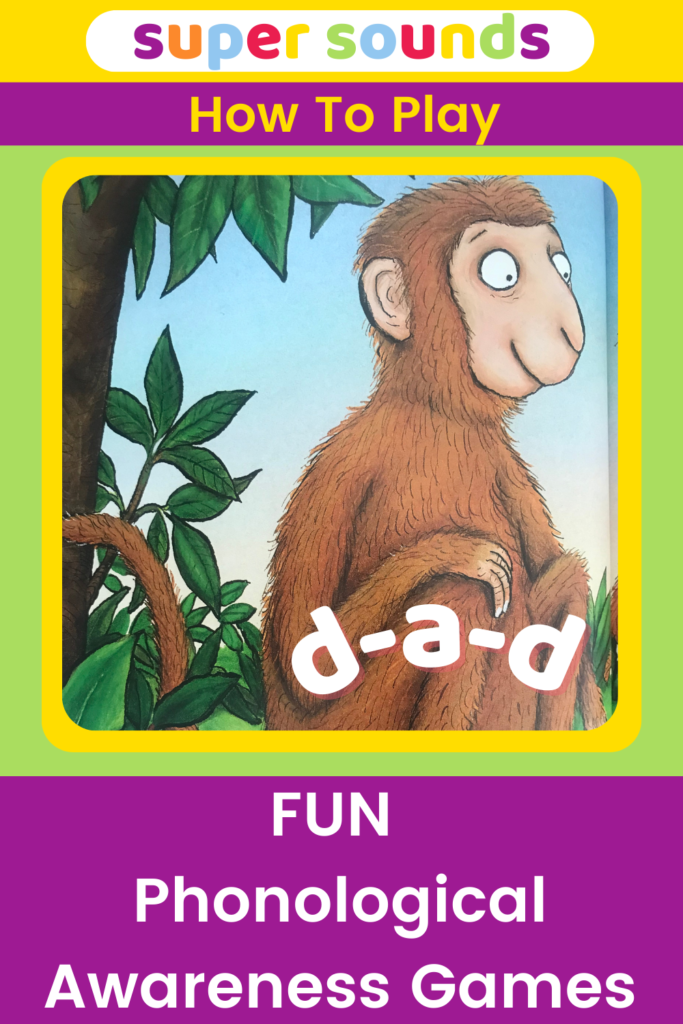
You Will Need:
A story with detailed and interesting pictures with lots of things to spot.
This game is like a classic game of I Spy. In this game though, the emphasis doesn’t focus on the first spoken sound in words.
The objective is to hear, then blend, all of the separate spoken sounds in words, matching these with an object.
Begin by looking at the book together. Talk about the pictures, relating these to what the children already know.
Start the game by saying: ,
“I hear with my little ear, something that sounds like…. d-o-g”
Say each of the separate sounds in the word, beginning with a simple 3 letter (cvc) word in the picture.
Support the children by blending the sounds together, then matching the blended word with the corresponding object.
Follow this process with several items in each picture.
Remind the children to look closely at the illustrations as they listen to the spoken sounds in the chosen word.
If the children are confident, let them have a go at offering the clues by orally segmenting themselves.
Super successful phonological awareness games at The Oaks!
What a success story!
By the end of our time working together, the staff and families at The Oaks were no longer mystified by phonological awareness.
They had expanded their knowledge, adopted a simple assessment system, and now had some fun and engaging games to play.
The staff and parents had the magic ingredient they needed to prepare their preschoolers for reading, spectacularly well.
Nursery Phonics Planning
If your preschooler enjoyed playing these phonological awareness games and you want to continue the prephonics fun, then Super Sounds is what you need.
It’s an evidence-based, tried and tested prephonics programme that is designed specifically for 2,3 and 4 year olds.
Perfect for using before any phonics programme, Super Sounds is uniquely written for a fun and engaging approach to teaching a progression of prephonic skills step by step.
Whether you want fresh ideas as an alternative to Phase 1 Phonics, or you’re new to phonics in nursery and don’t know where to start, Super Sounds is waiting for you!
More ideas for developing phonological awareness
Super Sounds by The Learning Lady
Ready for Ready – Preschool Online Training Course
FREE Recommended Reading books for Preschool Phonics
Fun rhythmic play with animals
Playing around with rhyme using Goldilocks!
Easy Alliteration with Tongue Twisters
Oral Blending practise, ready for school
Developing phonological awareness in the home corner
What comes before Phonics by Sally Neaum
